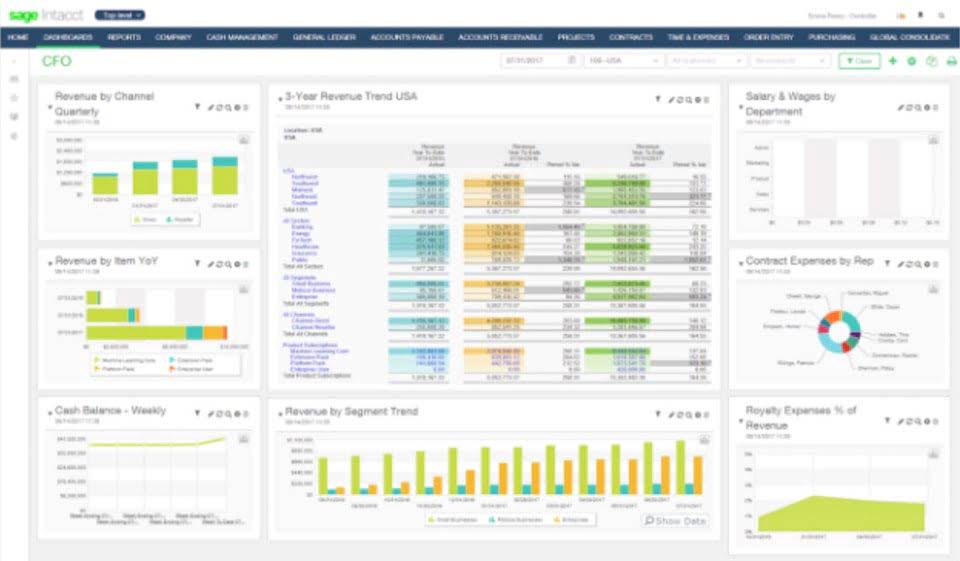
The R-squared coefficient represents the proportion of r&d tax credit variation in the dependent variable (y) that is accounted for by the regression line, compared to the variation explained by the mean of y. Essentially, it measures how much more accurately the regression line predicts each point’s value compared to simply using the average value of y. The following examples show how to find the correlation coefficient from the R-squared value of a regression model in practice.
Relation to unexplained variance

The correlation coefficient (r), the correlation coefficient of regression (r²), and the programming language R are all three iconic Rs of Data-Science. The correlation coefficient (r) is an extremely known statistical test that is extremely used in Machine-Learning models. The correlation coefficient of regression can identify how in-line your slope is to the value is to the correlation, and is a great metric for regressive target prediction. R is a functional language that holds its roots in the language S bookkeeping and is a very popular choice among Data-Scientists.
- To help answer this, there is a descriptive statistic called the correlation coefficient.
- However, this is using the correlation squared approximation for r-squared as mentioned in another answer.
- Kendall tau correlation coefficient is sensitive monotonic relationship between the variables.
- This approach helps identify distinct patterns within subgroups and highlights important differences between them.
- However, given the high views of this thread, I feel obliged to add more statistical details and discussions.
- What follows is a process for calculating the correlation coefficient mainly by hand, with a calculator used for the routine arithmetic steps.
- In this example, we can see that age is able to explain 47.73% of the variation in max bench press amount.
R-Squared vs Adjusted R-Squared

The R-squared value tells us how good a regression model is in order to predict the value of the dependent variable. A 20% R squared value suggests that the dependent variable varies by 20% from the predicted value. Thus a higher value of R squared shows that 20% of the variability of the regression model is taken into account. A large value of R square is sometimes good but it may also show certain problems with our regression model. Similarly, a low value of R square may sometimes be also obtained in the case of well-fit regression models. Thus we need to consider other factors also when determining the variability of a regression model.
- In statistics, R-squared (R2) measures the proportion of the variance in the response variable that can be explained by the predictor variable in a regression model.
- But the calculation of the correlation coefficient involves not only two standard deviations but a multitude of other operations.
- You can calculate correlation by hand, by using some free correlation calculators available online, or by using the statistical functions of a good graphing calculator.
- Understanding these relationships provides valuable context for interpretation and can guide future research directions.
- We will begin by listing the steps for the calculation of the correlation coefficient.
- To calculate the coefficient of determination from above data we need to calculate ∑x, ∑y, ∑(xy), ∑x2, ∑y2, (∑x)2, (∑y)2.
- If equation 1 of Kvålseth12 is used (this is the equation used most often), R2 can be less than zero.
How to Determine the Correlation Coefficient
Charging a 24V battery with a solar panel involves connecting the panel to the charge controller, which then connects to the battery. Overcharging or using a charger with excessive current can cause the battery to overheat, which can damage its cells and significantly reduce its lifespan. While calculating the required wattage is a good starting point, it’s equally important to ensure that the charger’s charging current does not exceed the manufacturer’s recommended limits. Understanding the wattage needed to charge a 24V battery is crucial for choosing the right battery charger and achieving efficient charging times.

Let’s do the statistics
Now that we know the total energy required to charge the battery (2400 Wh), we can calculate the power needed with a specific charging time. This guide explores how to https://www.bookstime.com/articles/back-office-accounting charge a 24V battery with different power sources, how many watts you need, and tips for safe and efficient charging practices. A reliable 24V battery system is essential for various applications, from off-grid solar setups to backup power solutions in RVs and boats. Knowing the correct charging methods, equipment, and settings for a 24V battery system can extend the battery life and ensure dependable performance. R2 can be interpreted as the variance of the model, which is influenced by the model complexity.

- For example, with a 24V LiFePO4 battery, maintaining a minimum State of Charge (SOC) of 20% is ideal for longer battery life.
- In this form R2 is expressed as the ratio of the explained variance (variance of the model’s predictions, which is SSreg / n) to the total variance (sample variance of the dependent variable, which is SStot / n).
- The coefficient of determination (commonly denoted R2) is the proportion of the variance in the response variable that can be explained by the explanatory variables in a regression model.
- One way to quantify the relationship between two variables is to use the Pearson correlation coefficient, which is a measure of the linear association between two variables.
- Ensuring that the battery doesn’t discharge below this voltage helps avoid deep discharge, which can shorten its lifespan.
- R is a functional language that holds its roots in the language S and is a very popular choice among Data-Scientists.
- So, in the case of a 24V 100Ah battery, you will need 720W to 960W to ensures efficient charging.
Values of ±1 indicate the strongest possible relationship between variables, and a value of 0 means there’s no relationship at all. I have a Masters of Science degree in Applied Statistics and I’ve worked on machine learning algorithms for professional businesses in both healthcare and retail. I’m passionate about statistics, machine learning, and data visualization and I created Statology to be a resource for both students and teachers alike. My goal with this site is to help you learn statistics through using simple terms, plenty of real-world examples, and helpful illustrations.
Leave a Reply